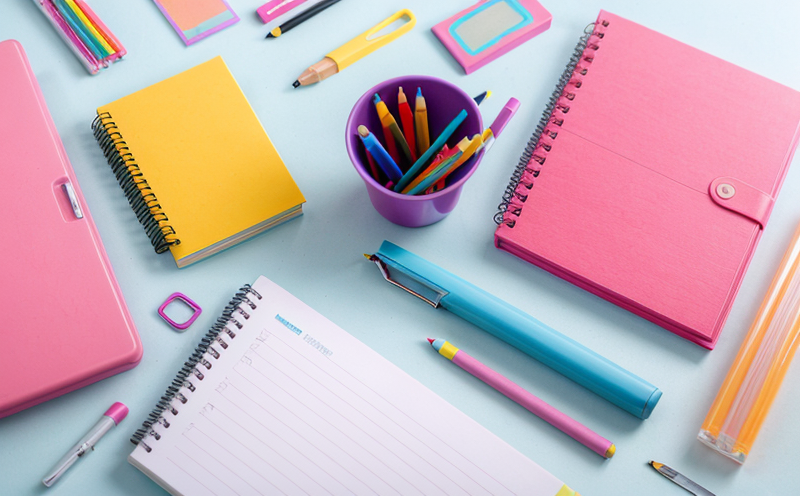CPSIA Testing for Children’s Stationery Safety
The Consumer Product Safety Improvement Act (CPSIA) of 2008 was enacted to protect children from hazards associated with unsafe consumer products. This legislation has had a significant impact on the manufacturing and sale of stationery items, especially those intended for use by children.
Stationery and school supplies are essential tools in educational environments but must meet stringent safety standards to prevent harm to young users. The CPSIA sets specific requirements for materials used in these products to ensure they do not contain lead or other harmful substances that could pose a risk, especially when ingested by children.
Our laboratory offers comprehensive testing services tailored to comply with the CPSIA’s regulations regarding children's stationery safety. This includes detailed analyses of various components such as plastic parts, markers, sharpeners, and notebooks. Our team uses advanced analytical techniques like inductively coupled plasma mass spectrometry (ICP-MS) for accurate detection levels down to parts per million.
The testing process begins with thorough sampling of the product according to industry standards. Once collected, samples undergo rigorous examination focusing on identifying any prohibited substances or elements that could be harmful if ingested. For instance, lead content in markers is critically important given its potential toxicity to developing bodies.
Our laboratory adheres strictly to international guidelines including ISO 8007 and ASTM D4236 for evaluating the physical properties of materials used in stationery items. These standards ensure consistency and reliability across all tests conducted here, providing clients with peace of mind knowing their products meet regulatory requirements.
In addition to chemical analysis, we also conduct mechanical testing to assess durability and stability under normal usage conditions. This helps manufacturers identify potential issues before they become safety concerns for end-users. Our experienced technicians perform these evaluations using state-of-the-art equipment capable of simulating real-world scenarios accurately.
Applied Standards
- ASTM D4236 - Standard Test Method for Determining the Lead Content in Plastic and Rubber Products Intended to be Used by Children
- ISO 8007 - Safety of Toys and Similar Consumer Products: Requirements Concerning the Limits on Certain Hazardous Substances
The CPSIA requires compliance with multiple international standards designed specifically for ensuring safety in children's products. By adhering to these stringent guidelines, we guarantee that every product tested meets or exceeds regulatory expectations.
Why Choose This Test
Choosing CPSIA testing is crucial for any company involved in manufacturing stationery items intended for children. Non-compliance can result in severe penalties, including fines and product recalls, which could devastate a business’s reputation and financial health.
| Potential Consequences | Compliance Benefits |
|---|---|
| Legal action from regulatory bodies | Avoidance of costly litigation and associated damages |
| Risks to brand reputation | Protection of consumer trust and goodwill |
| Increased operational costs due to recalls | Cost savings through early detection and correction of issues |
Use Cases and Application Examples
- Evaluating the safety of erasers for their non-toxicity towards children's health.
- Testing markers to ensure they meet CPSIA limits on lead content in ink.
- Inspecting sharpeners used by students to check against sharp edges that might cause injury.
The CPSIA testing process is applicable not only to individual products but also to entire ranges of stationery goods. Our comprehensive approach ensures that all items within a batch or line-up are evaluated meticulously for safety concerns.





